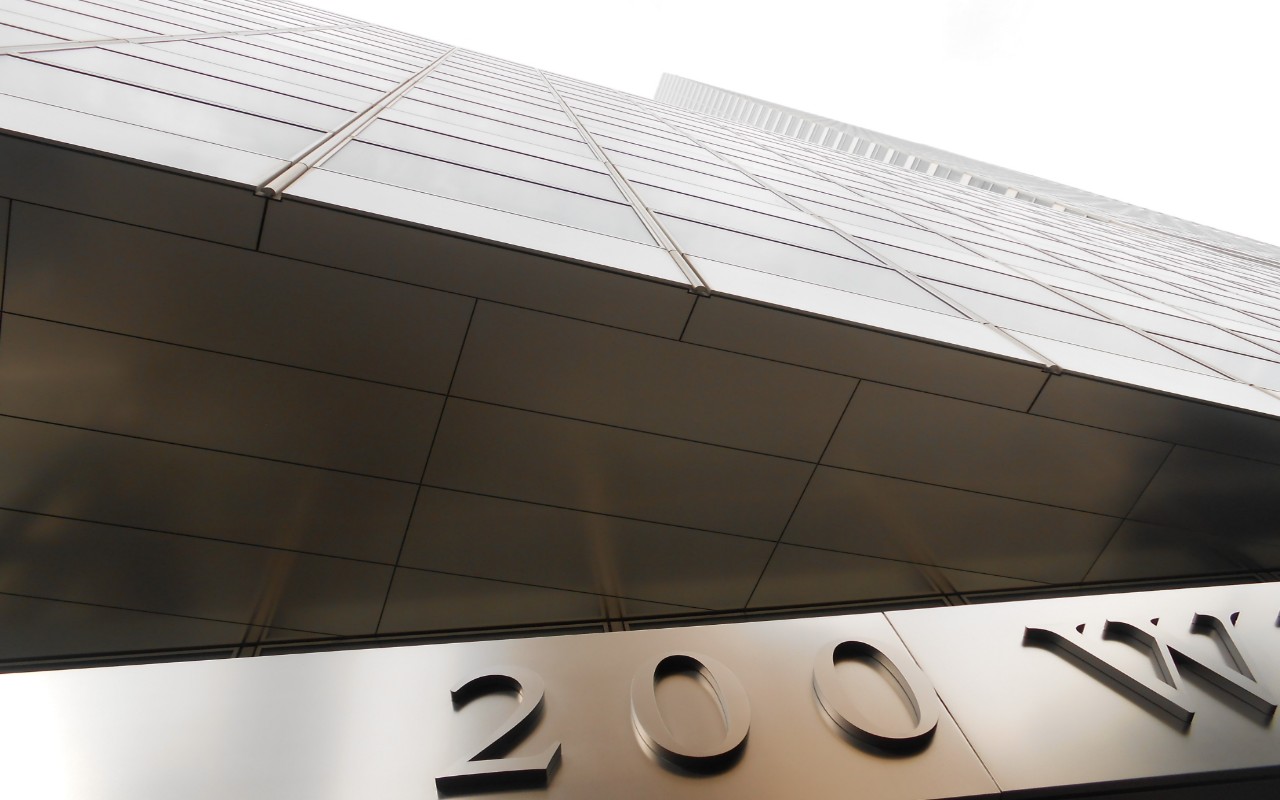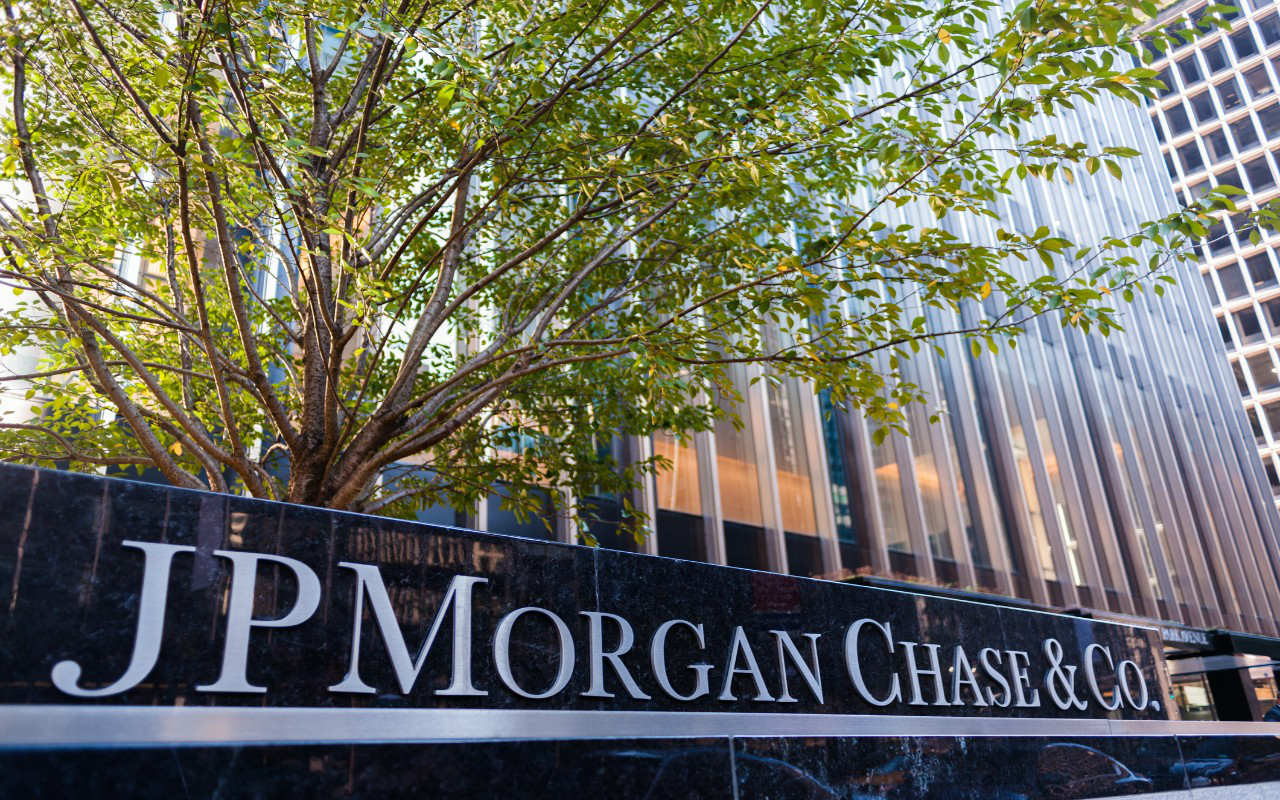10 Top-Rated Mega-Cap Stocks to Buy Now
When market volatility is high and economic uncertainty is rising, there's comfort to be found in mega-cap stocks.


When market volatility is high and economic uncertainty is rising, there's comfort to be found in mega-cap stocks. Stocks with market values of at least $50 billion tend to be bigger, more stable holdings. They tend to have stronger balance sheets and often pay dividends.
When it comes to finding such stocks, there’s no substitute for roll-up-your-sleeves fundamental analysis. Factors such as revenue growth, earnings estimates, profit margins and debt levels are just some of a long-term investor’s most important tools. Traders and tactical investors might also consider technical analysis, which attempts to divine patterns from changes in a stock’s price and volume.
Then there’s quantitative analysis, which takes a wide swath of fundamental, technical and other data, runs it through a mathematical model and calculates a recommendation. Quantitative analysis usually is the preserve of so-called quant funds, which guard their methods jealously. But thanks to StockReports+ from Refinitiv, we know what at least one quant model has to say.
StockReports+ combines a weighted quantitative analysis of six widely used tools: earnings (including estimate surprises and analyst recommendation changes, among other factors; fundamental analysis, which encompasses profitability, debt and dividends, among other considerations; relative valuation, which looks at measures such as price-to-sales and price-to-earnings ratios; risk, which considers magnitude of returns, volatility and other factors; price momentum, which is based on technical performance factors such as seasonality and relative strength; and insider trading, which looks at whether top corporate executives have been net buyers or sellers of their company’s stock.
For mega-cap stocks, or stocks with market values of at least $50 billion, StockReports+ gives greater weight to price momentum and insider trading to calculate an optimized score, since those have proven to be important predictors of future performance. A score of 8 to 10 is considered positive, 4 to 7 is neutral, and 1 to 3 is negative.
It’s a lot to digest. But these are the top 10 mega-cap stocks to buy right now, based off their high marks from the quantitative analysis from StockReports+.
Data is as of May 31, 2019. Quantitative analysis is from StockReports+ from Refintiv. Analysts’ recommendations, price targets, price-to-earnings ratios and long-term growth forecasts are from Refinitiv. Dividend yields are calculated by annualizing the most recent quarterly payout and dividing by the share price. Stocks are listed by strength of optimized score, from lowest to highest.

10. Charter Communications
- Market value: $84.2 billion
- Dividend yield: N/A
- StockReports+ Scores: Earnings (3), Fundamental (6), Relative Valuation (5), Risk (10), Price Momentum (9), Insider Trading (4)
- Optimized total score: 8
- Charter Communications (CHTR, $376.80) – the nation’s third-largest pay TV provider behind Comcast (CMCSA) and AT&T’s (T) different offerings – provides cable, internet and voice services to 26 million customers across 41 states.
Although analysts project Charter to deliver average annual earnings growth of more than 45% over the next five years, recent downward revisions to profit estimates and a couple of analyst downgrades hurt its quantitative earnings grade.
Fundamental indicators are essentially a wash. The cable company gets high marks for earnings quality, but its gross profit margin has been lower than the industry average for five years running and it doesn’t pay a dividend.
What makes this mega-cap shine in quantitative analysis is its price momentum and risk. “Over the last 90 days, CHTR shares have been less volatile than the overall market, as the stock’s daily price has fluctuated less than 94% of S&P 500 index firms,” StockReports+ notes. Charter’s shares also are entering a historically strong seasonal period.

9. Goldman Sachs
- Market value: $66.8 billion
- Dividend yield: 1.9%
- StockReports+ Scores: Earnings (8), Fundamental (4), Relative Valuation (9), Risk (10), Price Momentum (3), Insider Trading (8)
- Optimized total score: 8
Shares in Goldman Sachs (GS, $182.49) have swooned over the past month, falling about 11% vs. a drop of nearly 7% in the Dow Jones Industrial Average, of which it is a component. Financial stocks as a group have been struggling of late because of several issues, including falling interest rates and worries that America’s trade conflicts will cramp growth.
That has hurt the Wall Street investment bank’s price momentum, but it sure has helped its valuation. The stock now trades at a measly seven times analysts’ expectations for next year’s profits – well below its own five-year average, and more than 50% cheaper than the Standard & Poor’s 500-stock index.
GS also gets strong marks for risk, earnings and insider trading activity.
The bank has surpassed analysts’ earnings estimates for four straight quarters. Moreover, Goldman Sachs has topped Street estimates by an average of 24% over that span. Analysts’ average price target of $229 gives GS stock implied upside of about 25% in the next 12 months, according to StockReports+ data. As for risk, this mega-cap stock offers low volatility and consistent return patterns.

8. Walt Disney
- Market value: $237.6 billion
- Dividend yield: 1.3%
- StockReports+ Scores: Earnings (7), Fundamental (7), Relative Valuation (2), Risk (9), Price Momentum (9), Insider Trading (6)
- Optimized Total Score: 9
The buzz recently around Walt Disney (DIS, $132.04) has been the success of Avengers: Endgame, which is creeping up on Avatar’s all-time box-office record, and anticipation of its Disney+ streaming service expected to launch later this year.
But Disney, already among the biggest mega-cap stocks on the market, just got a heckuva lot bigger.
Disney completed its $71 billion acquisition of 21st Century Fox’s (FOXA) film and TV assets in late March. The company says it will take two years before the deal is accretive to earnings per share, and analysts have adjusted their forecasts accordingly. DIS is projected to generate average annual earnings growth of not-quite 2% over the next five years.
On a quantitative basis, however, DIS gets top marks. The stock, a component of the Dow Jones Industrial Average enjoys strong upward price momentum, according to StockReports+, and below-average risk. Insider-trading activity is essentially neutral, with top executives collectively buying a mere 65,000 more shares than they’ve sold over the past six months.
The biggest blemish on DIS stock is valuation, and it does indeed look a bit pricey by some measures. At 21 times expected earnings, shares trade at a 17% premium to their own five-year average, and are 25% more expensive than the S&P 500 on a forward earnings basis. The stock also looks expensive given its projected long-term earnings growth.

7. Norfolk Southern
- Market value: $51.9 billion
- Dividend yield: 1.8%
- StockReports+ Scores: Earnings (9), Fundamental (8), Relative Valuation (5), Risk (9), Price Momentum (10), Insider Trading (3)
- Optimized total score: 9
Shares in Norfolk Southern (NSC, $195.14) were up a whopping 30% for the year-to-date through May 31, vs. a gain of 10% for the S&P 500. “Substantial surge in manufactured goods, massive tax hauls and business-friendly policies of the government have fueled railroad operators’ growth,” write analysts at Zacks Investment Research.
NSC’s stock has drifted lower of late, hurt by trade-war worries, but a host of quantitative factors suggests the outlook remains bright. The company has beaten analysts’ earnings estimates in each of the past four quarters by an average of 9.4%. Notably, analysts’ average price target has increased by 12% over the past three months to $214. That gives the stock implied upside of about 10% over the next year or so.
The run-up in the stock price gives NSC upside momentum, but it also has made the valuation “neutral,” according to StockReports+. Shares go for 17.8 times projected earnings, which is 7% above their own five-year average and 8% more expensive than the S&P 500. So it’s not overpriced, but neither is it cheap.
As for risk, shares get high marks for low volatility, but a recent pick-up in selling by top executives dings NSC’s marks for insider trading.

6. Canadian National Railway
- Market value: $63.9 billion
- Dividend yield: 1.8%
- StockReports+ Scores: Earnings (6), Fundamental (5), Relative Valuation (4), Risk (10), Price Momentum (10), Insider Trading (N/R)
- Optimized total score: 10
- Canadian National Railway (CNI, $88.59) is in the same boat as Norfolk Southern: The pair of mega-cap railroad stocks have benefited from increased rail traffic and lower corporate taxes. Shares were up almost 20% for the year-to-date ended May 31. They’ve cooled off along with the rest of the market recently but still get top marks for price momentum and risk.
Technical factors, such as where it trades relative to its moving averages and 52-week highs and lows, have CNI standing at a three-year high price momentum score, according to StockReports+. As for risk, this is a stock with comparatively low volatility. “On days when the market is up, CNI shares tend to lag the S&P 500,” StockReports+ says. “However, on days when the market is down, the shares generally decrease less than the index.”
The decent-if-not-spectacular dividend yield also gives the stock some defensive characteristics. Quantitative scores for earnings, fundamentals and relative valuation are “neutral.” CNI has no score for insider trading because StockReports+ tracks that data for U.S. companies only.

5. Crown Castle International
- Market value: $54.0 billion
- Dividend yield: 3.5%
- StockReports+ Scores: Earnings (7), Fundamental (5), Relative Valuation (1), Risk (9), Price Momentum (9), Insider Trading (9)
- Optimized total score: 10
- Crown Castle International (CCI, $130.01) – which owns, operates and leases tens of thousands of cellphone towers – is structured as a real estate investment trust (REIT). In exchange for certain tax benefits, REITs are required to distribute almost all of their operating income as dividends.
Between its massive footprint in the wireless communications infrastructure industry and generous dividend, CCI has attractive defensive characteristics.
Crown Castle shares tend to lag the S&P 500 on days when the broader market index is up, and decrease less than the index when stocks in general are selling off. Technical factors and the fact that CCI was up almost 20% for the year-to-date through May 31 help it get top marks for price momentum. Indeed, over the past month, Crown Castle is up almost 5% vs. a drop a more than 4% for the S&P 500.
The big knock on CCI from a quantitative perspective is valuation. Shares trade at more than 75 times expected earnings, according to StockReports+, which obviously sounds rich. However, things look a little less extreme when you look at funds from operations (FFO), which is a key profitability measure for REITs. Crown Castle is trading at 22.2 times its forecasts for this year’s adjusted FFO, which is still high as far as REITs go, but not exorbitant.

4. UnitedHealth Group
- Market value: $229.8 billion
- Dividend yield: 1.5%
- StockReports+ Scores: Earnings (10), Fundamental (7), Relative Valuation (6), Risk (7), Price Momentum (9), Insider Trading (9)
- Optimized total score: 10
With a market value of nearly $230 billion and a 2020 sales forecast of $264.5 billion, UnitedHealth Group (UNH, $241.80) is the largest publicly traded health insurance company by a wide margin. Although UNH stock was down 3% for the year-to-date through May 31, it still gets high marks in several quantitative measures. Indeed, it’s the only health insurer to get a perfect optimized score under the StockReports+ system.
“UnitedHealth Group Inc currently has an Earnings Rating of 10, which is significantly more bullish than the Managed Healthcare industry average of 7.3,” StockReports+ notes. UNH has exceeded analysts’ average earnings estimate in 11 of the past 12 quarters, and Wall Street expects average annual earnings growth of 13.4% over the next half-decade.
Although scores for fundamentals, relative valuation and risk are “neutral,” UnitedHealth gets bullish marks for price momentum and insider trading activity. The stock is entering a historically favorable seasonal period and is backed by encouraging stock-chart signals. Meanwhile, corporate insiders have been scooping up UNH stock this quarter at the highest rate in five years.
UNH has an average analyst recommendation of “Buy” and a price target of $287 that implies 19% upside from current levels. Among the believers is SunTrust analyst David MacDonald, who says the “valuation risk/reward is compelling” and is looking for the stock to hit $300 within the next 12 months.

3. Enterprise Products Partners
- Market value: $61.0 billion
- Distribution yield: 6.3%*
- StockReports+ Scores: Earnings (9), Fundamental (7), Relative Valuation (8), Risk (10), Price Momentum (6), Insider Trading (8)
- Optimized total score: 10
- Enterprise Products Partners (EPD, $27.89) operates natural gas and crude oil pipelines and related facilities. It’s also one of the few mega-cap stocks among the master limited partnership (MLP) set.
Like many MLPs, EPD offers a steady stream of cash for income investors. Indeed, the company has raised its distribution (a tax-deferred form of dividend paid by MLPs) steadily since 1998. Just be forewarned that one of the downsides of owning MLPs is that the taxes can get complicated, including having to file a Schedule K-1 with the Internal Revenue Service.
On a quantitative basis, Enterprise Products Partners gets high marks for earnings, relative valuation and risk. Analysts’ average target price of $34 gives EPD implied upside of 22% over the next 12 months. Of the 23 analysts covering the stock tracked by Refinitiv, 12 call it a “Strong Buy,” while 11 have it at “Buy.”
The bullishness stems in part from EPD’s compelling valuation. At 13.4 times expected earnings, EPD currently trades at a 31% discount to its own five-year average. It’s also 19% cheaper than the S&P 500. Indeed, that was the primary driver behind Goldman Sachs analyst Michael Lapides’ decision to upgrade the stock from “Neutral” to “Buy.” He also cited strong cash flows.
One last positive to note: Shares are less volatile than the broader market index, according to StockReports+ analysis.
* Distribution yields are calculated by annualizing the most recent distribution and dividing by the share price. Distributions are similar to dividends, but are treated as tax-deferred returns of capital and require different paperwork come tax time.

2. Linde
- Market value: $98.0 billion
- Dividend yield: 1.9%
- StockReports+ Scores: Earnings (4), Fundamental (4), Relative Valuation (3), Risk (10), Price Momentum (9), Insider Trading (9)
- Optimized total score: 10
- Linde (LIN, $180.55) won’t wow you with its quantitative scores for earnings, fundamentals or relative valuation, but this global industrial gasses and engineering company is high on defense, dividends and insider sentiment.
Linde joined the Dividend Aristocrats in late 2018 following a $90 billion merger with Praxair that created the world’s largest industrial gasses company. The Dividend Aristocrats are an elite group of S&P 500 stocks that have raised their payouts annually for at least 25 consecutive years. The steadily rising dividend adds ballast and helps make LIN less volatile than the broader market.
Linde also has price momentum on its side, thanks to several technical factors, and in fact, shares are within striking distance of their 52-week high. Insiders certainly appear bullish. Top executives bought $872,753 worth of LIN stock in May, the highest buy total over the past 12 months.
Looking forward, Jefferies analyst Laurence Alexander – who has a “Buy” rating and $216 price target on LIN – sees 8% annual sales growth on average through 2023.

1. JPMorgan Chase
- Market value: $343.7 billion
- Dividend yield: 3.0%
- StockReports+ Scores: Earnings (5), Fundamental (6), Relative Valuation (9), Risk (10), Price Momentum (7), Insider Trading (7)
- Optimized total score: 10
With shares up just 8.5% for the year-to-date ended May 31, JPMorgan Chase (JPM, $105.96) – the largest of the “Big Four” mega-cap bank stocks – is lagging the broader market. The flip side? Shares in the nation’s biggest bank by assets look like a bargain.
At 10.6 times forward earnings, JPM offers an 8% discount to its own five-year average. It’s also 36% cheaper than the S&P 500. Shares also are deeply discounted when looking at price/earnings-to-growth (PEG), which measures how fast a stock is rising relative to its growth prospects.
As for risk: “JPM tends to perform in-line with the S&P 500 index regardless of whether the market is experiencing an up or a down day,” StockReports+ notes. And over the past 90 days, JPMorgan’s shares have actually been less volatile than the overall market.
Analysts’ average recommendation on the stock is “Buy,” and they expect JPMorgan Chase to generate average annual earnings growth of 9.6% over the next five years. The Street’s average target price of $118 gives the stock implied upside of about 11% over the next 12 months or so.
Profit and prosper with the best of Kiplinger's advice on investing, taxes, retirement, personal finance and much more. Delivered daily. Enter your email in the box and click Sign Me Up.

Dan Burrows is Kiplinger's senior investing writer, having joined the publication full time in 2016.
A long-time financial journalist, Dan is a veteran of MarketWatch, CBS MoneyWatch, SmartMoney, InvestorPlace, DailyFinance and other tier 1 national publications. He has written for The Wall Street Journal, Bloomberg and Consumer Reports and his stories have appeared in the New York Daily News, the San Jose Mercury News and Investor's Business Daily, among many other outlets. As a senior writer at AOL's DailyFinance, Dan reported market news from the floor of the New York Stock Exchange.
Once upon a time – before his days as a financial reporter and assistant financial editor at legendary fashion trade paper Women's Wear Daily – Dan worked for Spy magazine, scribbled away at Time Inc. and contributed to Maxim magazine back when lad mags were a thing. He's also written for Esquire magazine's Dubious Achievements Awards.
In his current role at Kiplinger, Dan writes about markets and macroeconomics.
Dan holds a bachelor's degree from Oberlin College and a master's degree from Columbia University.
Disclosure: Dan does not trade individual stocks or securities. He is eternally long the U.S equity market, primarily through tax-advantaged accounts.
-
 Ten Retirement Tax Plan Moves to Make Before December 31
Ten Retirement Tax Plan Moves to Make Before December 31Retirement Taxes Proactively reviewing your health coverage, RMDs, and IRAs can lower retirement taxes in 2025 and 2026. Here’s how.
-
 The Best (and Worst) Airlines for Flight Delays and Cancellations
The Best (and Worst) Airlines for Flight Delays and CancellationsWhich airlines should you book and which should you avoid if you want to make it to your destination on time?
-
 Stocks Rally on Apple Strength: Stock Market Today
Stocks Rally on Apple Strength: Stock Market TodayThe iPhone maker will boost its U.S. investment by $100 billion, which sent the Dow Jones stock soaring.
-
 Stock Market Today: Stocks Rise Despite Stagflation Risk
Stock Market Today: Stocks Rise Despite Stagflation RiskThe business of business continues apace on continuing hope for reduced trade-related uncertainty.
-
 4 Turnaround Stocks to Consider – and 2 More to Keep an Eye On
4 Turnaround Stocks to Consider – and 2 More to Keep an Eye OnA turnaround stock is a struggling company with a strong makeover plan that can pay off for intrepid investors.
-
 Stock Market Today: Stocks Waver as Big Tech Slumps on Spending Concerns
Stock Market Today: Stocks Waver as Big Tech Slumps on Spending ConcernsMarkets seesawed amid worries over massive costs for artificial intelligence and mixed economic news.
-
 Is Disney Stock Still a Buy After Earnings?
Is Disney Stock Still a Buy After Earnings?Walt Disney stock is down Wednesday after the entertainment and media company beat fiscal 2025 first-quarter expectations. Here's what you need to know.
-
 The 24 Cheapest Places To Retire in the US
The 24 Cheapest Places To Retire in the USWhen you're trying to balance a fixed income with an enjoyable retirement, cost of living is a crucial factor to consider. Is your state the best?
-
 Stock Market Today: Tech Stocks Soar Ahead of CES 2025
Stock Market Today: Tech Stocks Soar Ahead of CES 2025This week's annual technology event will give updates on AI, EVs and self-driving cars.
-
 Stock Market Today: Stocks Pause Near Highs Ahead of Jobs Friday
Stock Market Today: Stocks Pause Near Highs Ahead of Jobs FridayInvestors await a key data set with sentiment still broadly positive.
